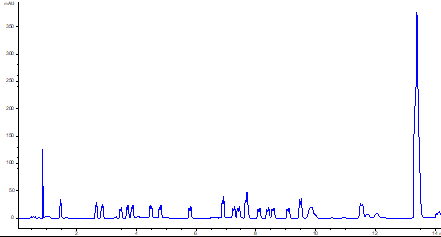There are many simple steps one can take to maximize up time of our LC systems. This post talks about tips specific to amino acid analysis.
The “How-to” Guide for Agilent’s AdvanceBio Amino Acid Analysis kit lays out all the instructions needed to implement the method, but what little things could we be doing to get the best performance out of the method and our LC? For instance, how often do you really need to replace mobile phases? Nobody wants to compromise their data, or have to rerun samples because mobile phase had gone bad, but I’ll readily admit to thinking, “Do I really have to replace that mobile phase today? Surely one more day…”
Here’s what we recommend and how often:
- Replace derivatization reagent (OPA and FMOC), borate buffer, and amino acid standards daily. The FMOC and OPA reagents are especially fragile, so the content of each ampule should be transferred into vials with inserts and refrigerated. The FMOC and OPA can be used up to 5 days after opening the ampule.
- Make fresh mobile phases at least weekly, especially the aqueous mobile phase. Remember what happens to aqueous mobile phases when they sit around too long. There’s plenty living in your mobile phase long before we can see it visually!
- Recalibrate for retention time and response factors at least weekly as well – simply include an amino acid standard in your worklist.
- Choose a couple of specs to keep an eye on the performance of your guard and analytical columns. For example, track the system back pressure and the resolution between a couple of pairs of amino acids in your daily calibration run to make sure you catch any drop off in column performance or system problems quickly.
While we’re talking about preventative steps you can take maximize your up time, I’ve got a piece of advice to avoid excessive wear on your autosampler. There are a couple of steps in the on-line derivatization program where the reagents need to mix in the autosampler. The “How-to” Guide says to mix at default speed. Don’t be tempted to increase the mixing speed to the maximum! Or if you’ve previously used this method on an older LC and now you’re running a newer model, the method may have used the maximum mixing speed. Newer autosamplers have a much faster maximum mixing speed than older models do, and frequent use at max speed can prematurely wear out components of the autosampler. Stick to the default mixing speed and be kind to your autosampler.
The last point for today is about column storage:
- Never leave the column in Mobile Phase A, even if it’s just overnight!
- For short term storage (including overnight), leave the column in Mobile Phase B.
- For long term storage, store the column in 50/50 acetonitrile/water.
The column for this method is a Poroshell column that has been modified to withstand high pH. Traditional silica columns are highly susceptible to dissolving above neutral pH. This column is resistant, but not impervious, to higher pH – so the method can be robustly run with the pH 8.2 mobile phase, but extended time above neutral pH will hurt the lifetime of the column.
After 3 days in Mobile Phase A:
Hope these tips help your lab run smoothly! Talk soon!
- Anne
Keywords: Bio columns, liquid chromatography, best practices, tips and tricks, amino acids, AdvanceBio blog

